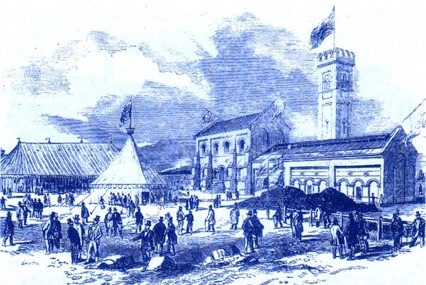
In the annals of medical history, there are few figures as remarkable and influential as Dr John Snow. Often overshadowed by other medical pioneers, his groundbreaking work in the mid-19th century forever changed our understanding of cholera and its transmission. Despite his significant contributions, Dr Snow’s legacy has been largely forgotten, overshadowed by more well-known medical advancements. In this article, we aim to shed light on Dr Snow’s remarkable achievements and highlight the importance of his discoveries in proving cholera’s waterborne transmission.
Early Career and the Broad Street Pump
Born in 1813, Dr John Snow began his medical career in London. His dedication to the field and unwavering pursuit of knowledge soon earned him recognition as a skilled and innovative physician. However, it was his investigation into the 1854 Broad Street cholera outbreak that would propel him into the annals of medical history.
At the time, cholera was a deadly and mysterious disease, causing widespread panic and claiming countless lives. Dr Snow, armed with his determination and keen observational skills, set out to uncover the source of the outbreak. Through meticulous mapping and data analysis, he noticed a striking correlation between the affected individuals and their proximity to the Broad Street water pump.
The Cholera Controversy
Dr Snow’s theory that cholera was transmitted through contaminated water faced significant opposition from the prevailing medical establishment. The dominant belief at the time was the miasma theory, which suggested that diseases like cholera were spread through foul odors in the air. Despite the resistance he faced, Dr Snow persisted in his research and continued to accumulate evidence to support his waterborne transmission theory.
The Grand Experiment
To prove his theory beyond a doubt, Dr Snow embarked on what would become known as the Grand Experiment. He meticulously gathered data on cholera cases in London and compared them to the water sources available to the affected individuals. His findings conclusively showed that individuals who consumed water from contaminated sources had a significantly higher risk of contracting cholera.
The Triumph of Evidence-Based Medicine
Dr Snow’s work in proving cholera’s waterborne transmission was a triumph of evidence-based medicine. His meticulous data collection, mapping, and analysis paved the way for modern epidemiology and public health practices. By demonstrating the link between contaminated water and cholera outbreaks, Dr Snow laid the foundation for future advancements in sanitation and disease prevention.
Legacy and Recognition
Despite the immense importance of his discoveries, Dr John Snow’s contributions were largely overlooked during his lifetime. It was only years after his death that his work gained widespread recognition and appreciation. Today, his legacy is celebrated, and his pioneering efforts are taught in medical schools around the world.
Conclusion
Dr John Snow’s role in proving cholera’s waterborne transmission cannot be overstated. His innovative research methods, unwavering dedication, and commitment to evidence-based medicine revolutionized our understanding of disease transmission. Although he may have been forgotten by many, his remarkable contributions continue to shape the field of public health and epidemiology. It is essential that we remember and honor Dr Snow’s legacy as we continue to strive for advancements in healthcare and disease prevention.
